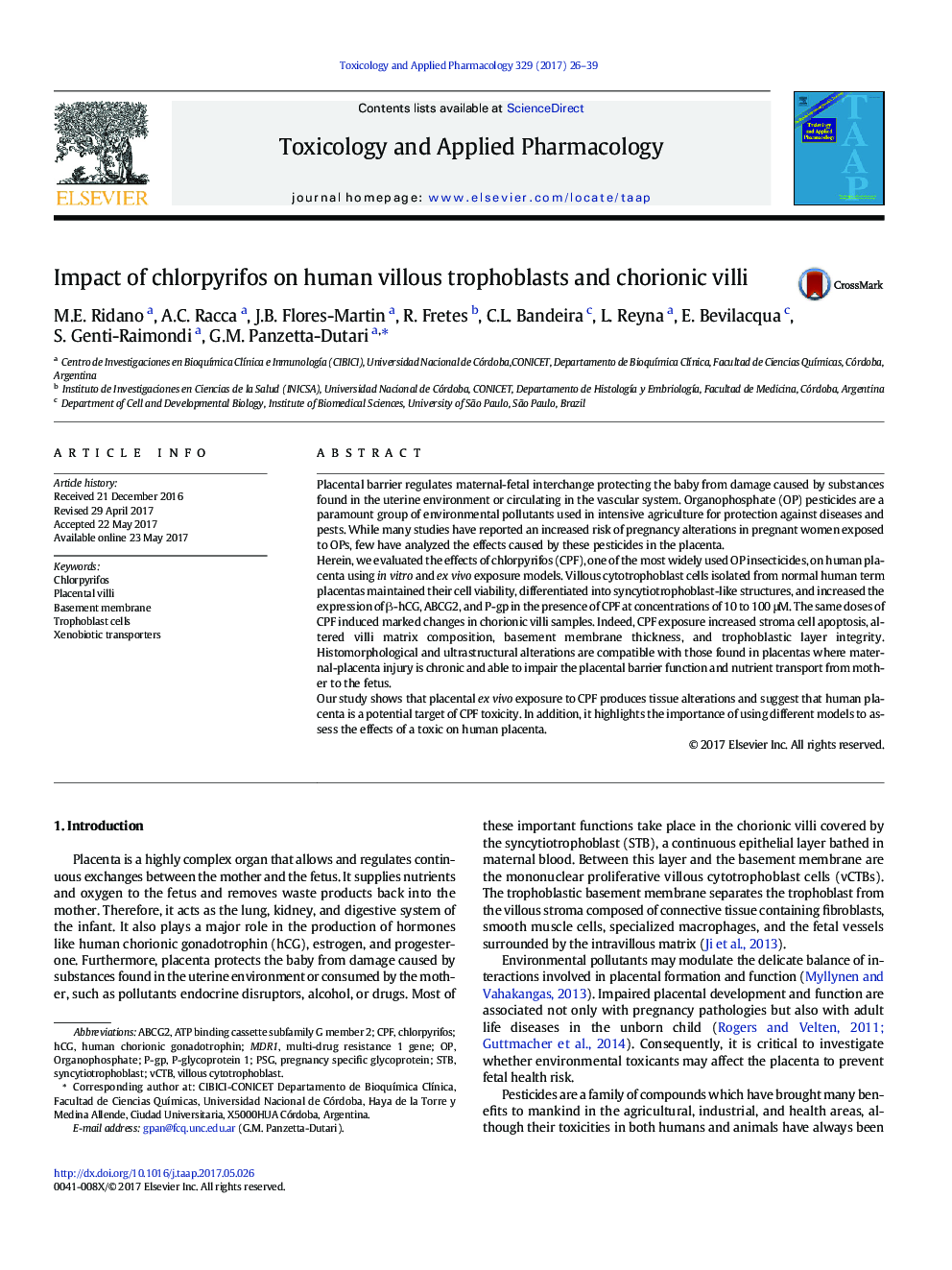| Article ID | Journal | Published Year | Pages | File Type |
|---|---|---|---|---|
| 5558336 | Toxicology and Applied Pharmacology | 2017 | 14 Pages |
â¢Isolated vCTB cells are resistant to CPF cytotoxicity up to 100 μM exposure doses.â¢CPF exposure does not interfere with the vCTB morphological differentiation process.â¢CPF induces the expression of β-hCG and the xenobiotic transporters ABCG2 and P-gp.â¢CPF exposure increases stroma cell apoptosis and modifies villi stroma composition.â¢CPF increases basement membrane thickness and disrupts trophoblastic layer integrity.
Placental barrier regulates maternal-fetal interchange protecting the baby from damage caused by substances found in the uterine environment or circulating in the vascular system. Organophosphate (OP) pesticides are a paramount group of environmental pollutants used in intensive agriculture for protection against diseases and pests. While many studies have reported an increased risk of pregnancy alterations in pregnant women exposed to OPs, few have analyzed the effects caused by these pesticides in the placenta.Herein, we evaluated the effects of chlorpyrifos (CPF), one of the most widely used OP insecticides, on human placenta using in vitro and ex vivo exposure models. Villous cytotrophoblast cells isolated from normal human term placentas maintained their cell viability, differentiated into syncytiotrophoblast-like structures, and increased the expression of β-hCG, ABCG2, and P-gp in the presence of CPF at concentrations of 10 to 100 μM. The same doses of CPF induced marked changes in chorionic villi samples. Indeed, CPF exposure increased stroma cell apoptosis, altered villi matrix composition, basement membrane thickness, and trophoblastic layer integrity. Histomorphological and ultrastructural alterations are compatible with those found in placentas where maternal-placenta injury is chronic and able to impair the placental barrier function and nutrient transport from mother to the fetus.Our study shows that placental ex vivo exposure to CPF produces tissue alterations and suggest that human placenta is a potential target of CPF toxicity. In addition, it highlights the importance of using different models to assess the effects of a toxic on human placenta.
